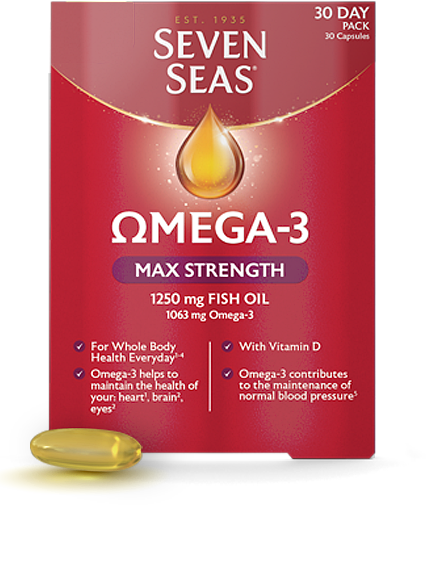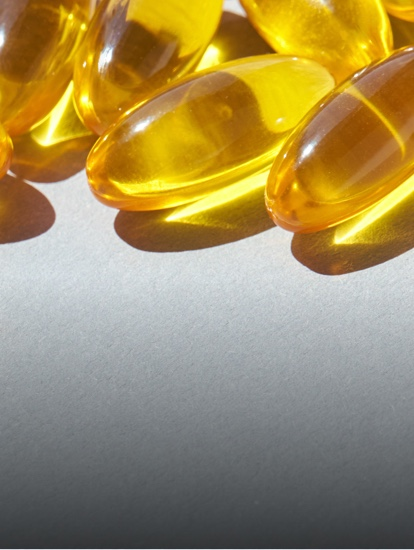The heart is the body's engine room; it is vital to look after your heart to keep your body running properly.
Jump to:
Regardless of age or gender, there is no better time than the present to start taking care of your heart. The heart is the body's engine room, pumping blood throughout the body, supplying nutrients and oxygen to tissues.
Keeping the heart healthy requires adopting intelligent lifestyle choices. Here are seven steps you can take at once to take care of your heart:
1. Quit smoking
According to the American Heart Association, smoking increases the risk of coronary heart disease and decreases your body's ability to undertake physical activity. Even secondhand smoke exposure increases your chances of cardiovascular disease by up to 30 per cent!1
2. Be physically active
Being active at an early age makes it much easier to remain active as an adult. Regular exercise sheds extra body weight, as well as reducing blood pressure and bad cholesterol. It also improves muscle strength and increases the efficiency of getting oxygen into the blood.
3. Know your family medical history
The history of heart disease and strokes in the family increases your chances of cardiovascular problems. You can change the behaviours that put you at greater risk of heart problems.
4. Reduce stress levels
There is a strong correlation between mental health and physical health, and stress is a perfect example. Excessive stress can cause high blood pressure, ulcers, headaches, and an increase in eating, smoking and alcohol consumption. Exercise, a healthy diet and cutting back on caffeine can all help reduce your stress level.
5. Know the warning signs of a heart attack and stroke
Many people who have heart attacks and strokes do not even know they have them, and the symptoms differ between men and women. You are more likely to recover if you recognise these symptoms and receive immediate assistance.
Adopting the above healthy habits will not only make you feel younger inside, but they will also help you live your life to its fullest and prolong the time you have to spend with family and loved ones.
6. Eat a healthy diet
Your diet should include fruits and vegetables, wholegrain starchy foods, dairy products, and non-dairy sources of protein (like meat, fish nuts, eggs, and beans).
It is important to limit your intake of foods and drinks high in fats, sugar, and sodium. If you should choose to drink alcoholic beverages, do so in moderation.
7. Heart Health Supplements: The Importance Of Omega-3, EPA & DHA
Long-chain Omega-3 fatty acids make up an essential part of a healthy diet and are found in oily fish such as salmon. There are two important long-chain Omega-3 fatty acids: EPA (eicosapentaenoic acid) and DHA (docosahexaenoic acid). Together these essential fatty acids deliver specific health benefits. DHA contributes to maintaining normal vision and brain function* while DHA and EPA contribute to the heart's normal function.**
How Does Omega-3 Help with Heart Health?
Omega-3 helps by supporting normal heart function, maintaining normal blood triglyceride levels, and normal blood pressure. For blood pressure, the beneficial effect is obtained with a daily intake of 3 g of EPA and DHA. Consumers should not exceed a supplemental daily intake of 5 g of EPA and DHA combined.
Triglyceride: The beneficial effect is obtained with a daily intake of 2 g of EPA and DHA. consumers should not exceed a supplemental daily intake of 5 g of EPA and DHA combined.
Sources of DHA & EPA
Oily fish is the richest source of long-chain Omega-3 fatty acids. The government recommends that we consume at least two portions of fish a week, one of which should be oily - such as salmon, fresh tuna, mackerel, and herring.
While you can choose from fresh, frozen, smoked, and canned fish, it is important to always check the food labels as smoked and canned fish may contain higher salt levels.
How Much Oily Fish Should I Eat?
When cooked, one portion of oily fish is around 140 g, and we should aim to have one portion a week.
However, it is important to remember that oily fish can contain low levels of pollutants that can build up the body. For this reason, there is a maximum recommendation for the amount we should consume weekly. These recommendations do differ for separate groups of people.
The general population is recommended to have no more than four portions of oily fish a week.
Women who are planning a pregnancy, are currently pregnant, or breastfeeding should eat no more than two portions of oily fish a week as pollutants found in oily fish may affect the baby's future development in the womb2.
However, pregnant women should avoid eating fish, such as raw fish and raw shellfish, and limit their eating.
What Omega-3 Supplements Should I take?
Seven Seas offers a range of products that are rich in Omega-3. For the highest amount of Omega-3, opt for Seven Seas Omega-3 & Immunity, or try the Seven Seas Cod Liver Oil One-A-Day.
* The beneficial effect is obtained with a daily intake of 250mg of DHA.
**The beneficial effect is obtained with a daily intake of 250mg of DHA and EPA.
References:
1 Barnoya J, Glantz SA. Cardiovascular effects of secondhand smoke: nearly as large as smoking. Circulation. 2005 May 24;111(20):2684-98.
2 NHS UK. 2018. Fish And Shellfish. [online] Available at: <https://www.nhs.uk/live-well/eat-well/fish-and-shellfish-nutrition> [Accessed 22 November 2020].

OMEGA-3 MAX STRENGTH
Our Omega-3 Max Strength contains 1063 mg Omega-3. Omega 3 helps maintain the health of your heart1, brain2, eyes2 and blood pressure5. It also contains the UK government recommended 10 μg of Vitamin D. Vitamin D supports the health of your bones3 and immune system4.




